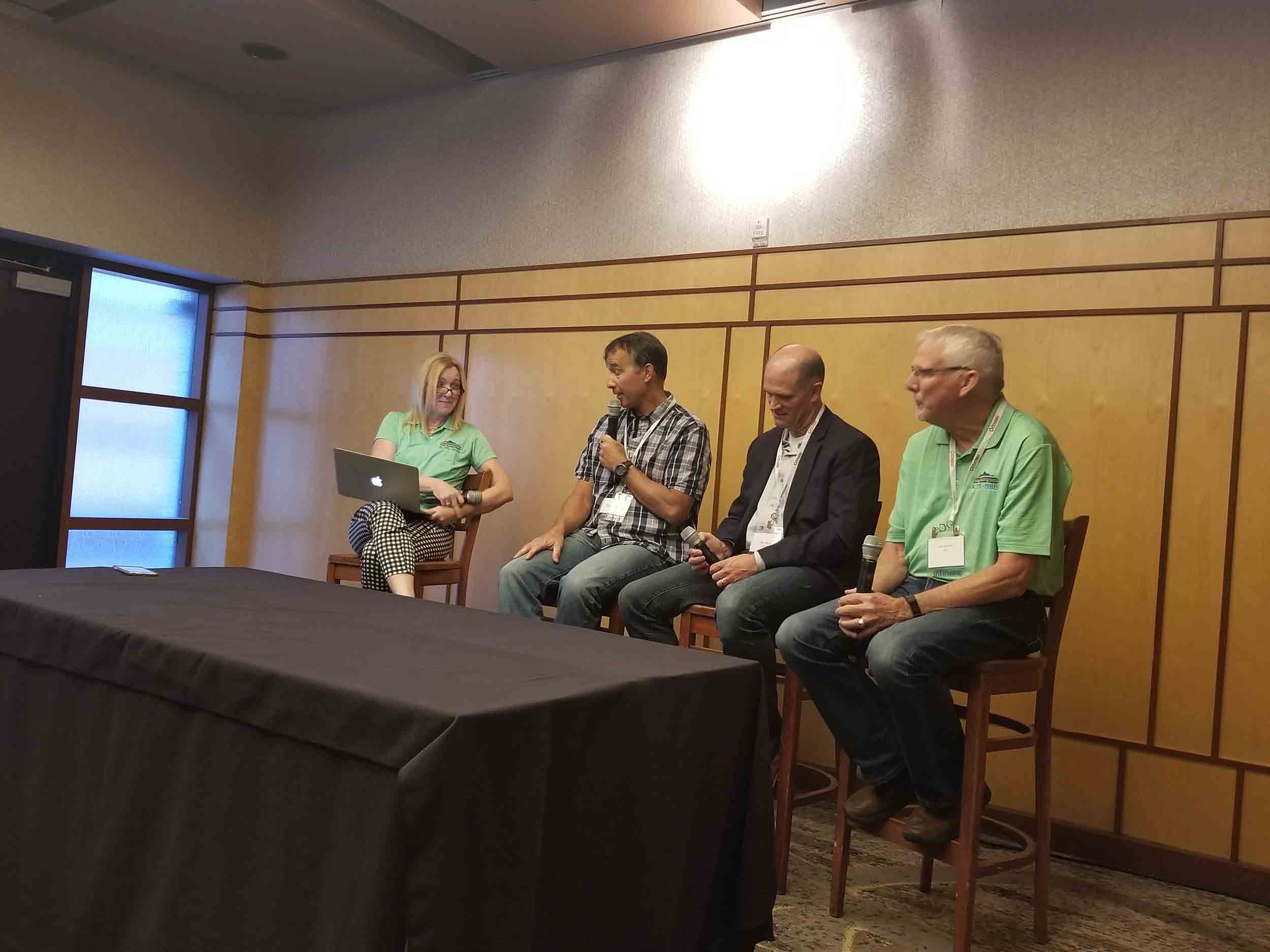First Full Duplex DOCSIS Interops in Sight

Why This Matters: Evolution of the new tech to create higher speeds and lower latencies will depend on budgets and the right foundational groundwork.
Full-fledged deployments of Full Duplex (FDX) DOCSIS are still at least a couple of years away, but CableLabs believes vendors are getting close enough in their technology development to be ready for initial interoperability testing later this year.
Interops are expected to be underway in earnest in 2019, but the start of that work could begin by fourth-quarter 2018, Doug Jones, principal architect at CableLabs, said June 6 at an operations roundtable that was part of the SCTE Rocky Mountain chapter’s 23rd annual Engineering Symposium in Englewood, Colo.
That will help to establish important groundwork on product interoperability for FDX DOCSIS, an annex to the DOCSIS 3.1 specifications that will support symmetrical multi-Gigabit broadband speeds on widely deployed hybrid fiber coax (HFC) networks.
CableLabs released the physical layer specs for FDX DOCSIS last fall, and followed with the addition of MAC Layer support in January.
Though the prescribed path to FDX DOCSIS is a node-plus-zero network (or N+0, a passive, deep fiber network in which there are no amplifiers between the node and the home), CableLabs is also working on other approaches that won’t necessarily require N+0 to get cable operators started on that path, Jones noted.
CableLabs, he explained, is building a plan based on a node-plus-five environment. “We’re going to prove that FDX equipment will work on that, as a path toward FDX DOCSIS and get you that 1-Gig [Gigabit per second] symmetrical tier maybe without having to go node-plus-zero first,” Jones said.
Broadcasting & Cable Newsletter
The smarter way to stay on top of broadcasting and cable industry. Sign up below
Having some flexibility is important because HFC networks are far from uniform between cable operators, or even within a single operator’s footprint. Some have segments of the network at node-plus-15 and others at node-plus-zero, and everything in between.
And there are major business decisions to consider with moving to N+0.
Big Budget Battle
“There’s a big battle that exists out there on cost that’s going to keep thwarting node-plus-zero for a while,” said Tom Gorman, founder and president of opXL, and a cable engineering executive who’s worked for operators such as Comcast and Charter Communications.
By way of example, he said some plant extensions still require an amplifier to boost the signal.
“There’s got to be a very concerted effort and plan and willingness to spend to get to that node-plus-zero [architecture],” Gorman said. “There’s still a lot of work to be done there.”
And there are other ways that operators are getting to symmetrical 1-Gbps speeds even before FDX DOCSIS takes firm hold and downstream and upstream traffic are carried on the same OFDM (orthogonal frequency division multiplexing) subcarriers.
For instance, some operators in Europe, including Vodafone Spain and ComHem in Sweden, have expanded their upstream capacity, using a split of 5 MHz to 204 MHz, to enable 1-Gig upstream speeds. That’s another way MSOs are achieving symmetrical 1-Gig speeds on HFC without spending on node-plus-zero, Jones said.
But Jones stressed that N+0 has critical benefits — in addition to delivering more capacity those networks can also carry power for the nodes as well as other devices that will also hang off of these increasingly distributed networks, such as access points for 4G and future 5G wireless and mobile capabilities.
“It’s the symmetrical capacity and the powering that makes [N+0] very valuable,” Jones said.
Even as cable operators add more and more fiber to their network, Gorman warned that MSOs must be careful that their workforces continue to include technicians that know their way around coax.
“We’re finding that there’s not enough people to splice coax,” Gorman said. “The coax splicing is becoming the dying art, and [cable operators] still have a ton of coax out there. That’s where there’s a hole that’s getting bigger and bigger.”
With respect to 5G, the cable industry is eager to participate in that evolution amid the move to a standard that will deliver higher speeds and lower latencies and will be enabled in part by small cells that will likely be backhauled by cable’s HFC plant and growing fiber networks.
Cable’s move to FDX DOCSIS and distributed access architectures make HFC suitable for dense, 5G microcells, Dan Rice, vice president of HFC architecture at Comcast, said.
“All [telecom companies] are headed to the same spot, with fiber to remote nodes and physical layers out in the node,” he said.
Gorman added that future 5G applications such as low-latency connectivity for autonomous vehicles, will present new challenges and opportunities for the cable industry.
Cable will need to focus on the accuracy, reliably and availability of those 5G networks.
“The applications for [5G] will be lifeline applications, and it just makes our plant reliability all the more important,” Gorman said. “This is critical stuff we’re talking about beyond that 5G can deliver more bandwidth wirelessly.”
Growing Role of Machine Learning
Earlier in the panel, Comcast’s Rice relayed some info on how machine learning is working its way into network operations.
A prime example is some work Comcast is doing to identify noise on the network and how to further mitigate it.
There’s a growing source of “switching power” noise that comes in small, periodic bursts, he noted.
Comcast has done some field trials using machine learning to get a fix on those signatures and train the model to keep that noise, Rice said. That test work has already seen “some definite reductions” on errors caused by such noise that could help to improve the customer experience when that sort of noise flares up.
